Methods for tying tomatoes in the greenhouse and in the open field
After planting tomatoes in a permanent place in a greenhouse or in open ground, it is necessary to tie up bushes of both tall and low-growing varieties. This procedure is not always applied to the southern regions, but in the rest it is considered an integral part of the necessary care, on which the quality of the future harvest largely depends.
Next, you will learn about why, when and how to tie tomatoes correctly, what methods exist.
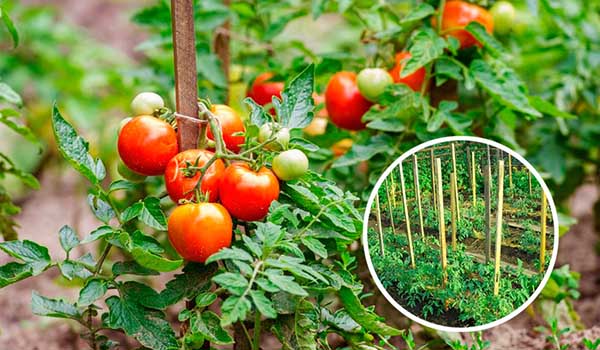
Content
What are the benefits of garter tomatoes and why it should be done
As the plants grow and the fruits form, the tomato bushes begin to lean to the ground under the weight of the harvest. And their excess contact with the ground can cause the development of fungal diseases or damage by slugs and worms.
There are other advantages of a tomato garter, confirming the need for it:
- Good air ventilation between bushes. This helps reduce the risk of late blight and improves oxygen access to the roots.
- Convenience when watering bushes. Since it is recommended to irrigate tomatoes at the root, the garter of plants facilitates this procedure, excluding the ingress of moisture on the leaves.
- Easy to pinch. Tying the tomatoes improves access to them from different sides, making it much easier to remove stepchildren as the plants grow.
- Prevents damage to the main stem. Under the weight of fruits, especially large-fruited varieties, the shoots of the plant are not able to withstand such a load and can break off. Therefore, the garter helps to redistribute the forces of the bushes and direct them to the development of a strong root system and the formation of a new ovary.
- Improves harvesting. It is much easier to remove fruits from tied bushes, since they are all in plain sight.
- Allows you to carry out high-quality processing of plants from pests and diseases.
- Helps free up space and get more fruits in a limited area, which is especially important when growing tall tomatoes in a greenhouse.
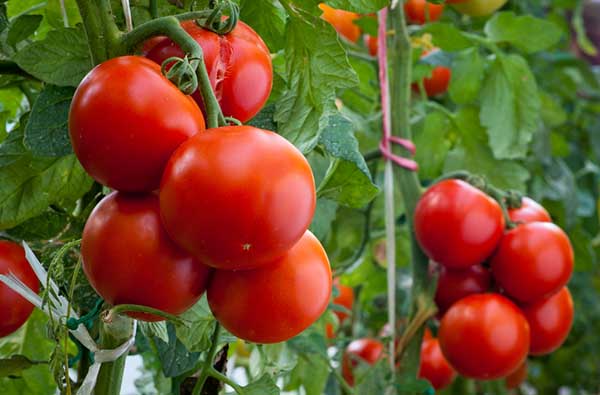
In the southern regions, the tying of tomatoes is sometimes not carried out, since the plants in the process of growth form shoots that take root and are additional sources of food for the bushes.
General rules and recommendations for garter tomatoes
Important! It is necessary to carry out a garter of tomatoes at the initial stage of plant development so as not to damage the bush.
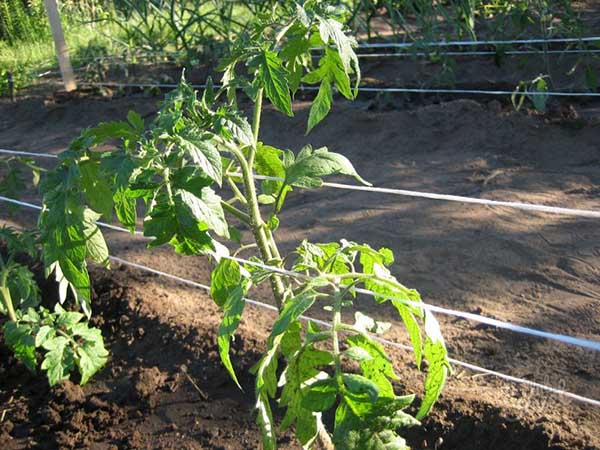
There are a number of rules and recommendations for carrying out the procedure for tying tomatoes in a greenhouse or in the open field, which must be taken into account when working in order to avoid possible mistakes:
- To prevent the development of fungal diseases, it is necessary to use disposable garters, which should be destroyed at the end of the season.
- All stakes and rods for support must be pre-treated and disinfected with a strong solution of potassium permanganate at the rate of 0.02 g per 1 liter of water.
- The twine or rope should not be tied tightly to the stem, as this will damage its integrity. Experts recommend that there is a distance of 1-2 cm between the support and the shoot.
- It is necessary to carry out tying tomatoes at a time when the bushes begin to lean towards the soil.
- The more complex the support structure is, the more reliably it will hold the bush, which will greatly facilitate the entire growing process.
- You should not save on the garter, because the main thing is that the bush is securely fixed and can withstand the load when the fruit ripens.
Video: how to tie tomatoes
What to use for garter tomatoes
When carrying out the tomato garter procedure, it is very important to use the right materials that will not harm the plant, but at the same time will be able to securely fix and support it.
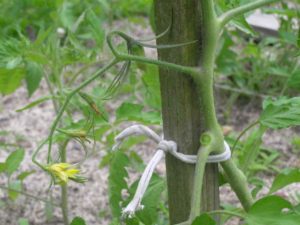
For garter tomatoes you will need high stakes and strips of fabric or ropes for fastening. Specialists do not recommend use wire, line and thin ropeas this material can cut the main stem when exposed to the wind.
Optimal option is considered cotton strips at least 4-5 cm wide. You can also use nylon garters from old tightsthat do not lose their qualities throughout the season, since they do not absorb water.
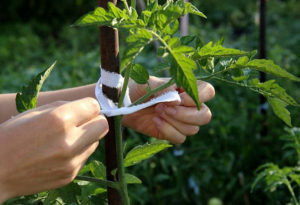
For multiple use, you can buy special plastic clothespins or clips in a specialized store. The convenience of their use lies in the fact that they are fastened with an easy movement and do not require additional skills. The clips are made of durable plastic and therefore securely fix the stem, and are also easy to clean, which allows them to be used for many years. They help to reliably fix not only the main stem and lateral shoots, but also branches with fruits.
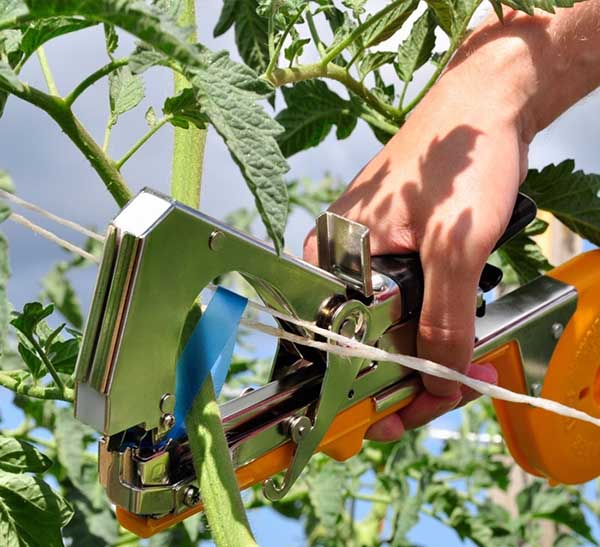
When growing tomatoes in large quantities, it is very convenient to use a special device equipped with adhesive tape and a cutter. It helps to fix the shoots at the required height to the support, and this is especially needed for the shoots of tall tomatoes. If necessary, the tape is removed without causing any damage to the plant.
Ways and options for garter tomatoes
There are several options for tying tomatoes in a greenhouse or open field, each of which has its own characteristics. Which of them to choose the gardener decides for himself, based on his capabilities and preferences.
The fastening scheme and the material used should be thought out in advance in order to further reduce the time for carrying out the garter and prevent damage to the stems and roots of tomato seedlings.
Individual support
This method is considered the most common and is used both in greenhouses and in the open field. As a support for plants, you can use wooden stakes, thick metal rods, plastic pipes. They are driven into the soil to a depth of 25 cm directly next to each bush. The height of each support must correspond to the variety of tomatoes being grown.
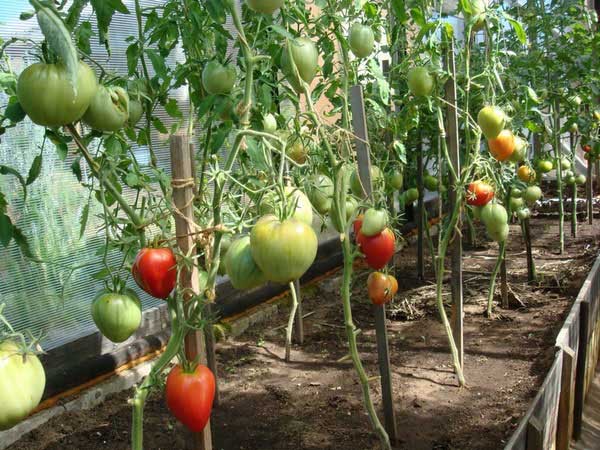
With the help of a garter material, the plant is securely fixed, but at the same time, the stem should not be pinched so as not to disturb the supply of nutrients to the apex. In addition to the main shoot, it is necessary to fix the large brushes of the plant, which will give reliability to the fastening.
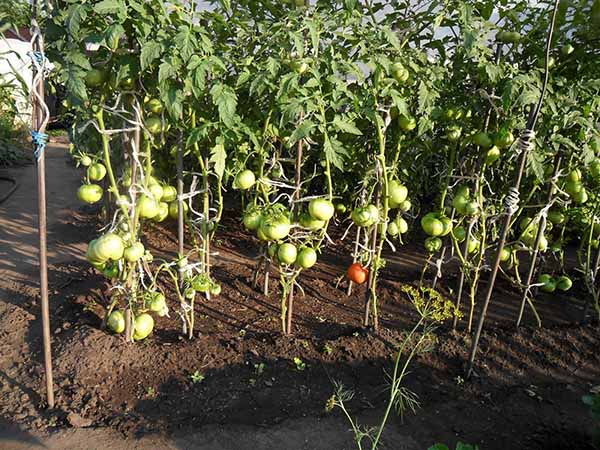
Experts recommend using this method for low and medium height tomato, as high varieties can fall with the support.
Horizontal trellises
This method is time consuming but reliable. To fasten the tomatoes, rods are driven in on both sides of the garden at a distance of 1.5-2 m from each other. At a height of 30-40 cm from the soil surface, a horizontal twine or wire is pulled, which is attached to the supports.
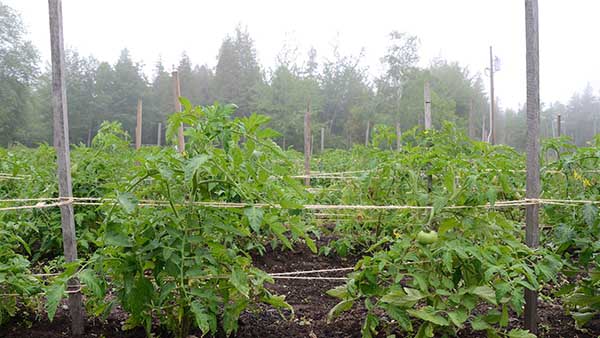
Rows of rope are added as the plants grow. Plants for fixing are started by a stretched string on one side and then on the other. In this case, large brushes are also tied or hung with hooks. This method of tying tomatoes allows you to fix the main shoot of the plant and 2-3 stepsons, which significantly increases the amount of harvest.
Note! Instead of a rope, you can use ready-made structures consisting of wooden or plastic rods. But at the same time, the support must be digged deeply and reliably strengthened so that it does not fall during the period of formation and ripening of fruits.
Vertical trellis
This method is a variation on the previous one. For him, it is also necessary to drive the supports into the ground on both sides of the garden and pull a strong wire over them from above. Tomatoes are tied to it with a rope, one end of which is fixed at the top, and the other - fixes the plant.
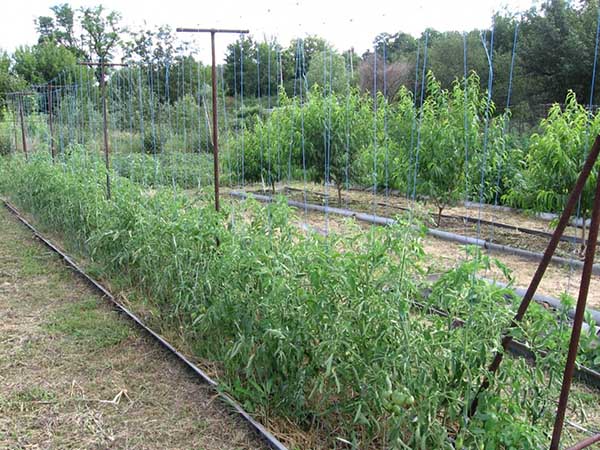
Over time, the garter must be tightened or tied around the stem to prevent the plants from sinking to the ground.
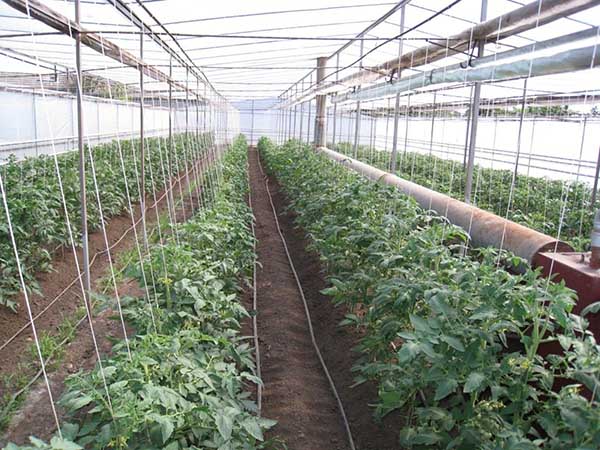
Mesh fence
It is considered a more practical option, but requires preliminary installation. To tie a tomato in this case, a net is used, which must be pulled along the row with tomatoes.
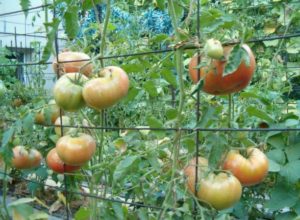
For its fastening, at least 3-4 supports should be used: along the edges and in the middle of the beds, which must be dug into the soil by 30-40 cm. This will help withstand the load during the period of mass ripening of fruits.
The bushes are attached to it with clothespins or twine. Convenient design is that plants can be gradually fixed as they grow.
Wire frame
The essence of the method lies in the fact that a frame of reinforcement is installed around the tomato bush, which thoroughly fixes the plant from all sides. To do this, it is necessary to wrap it with a metal mesh like a pipe and dig it into the soil to a depth of 30 cm. Such an attachment is most effective for bushes that give many fruits with compact shapes.
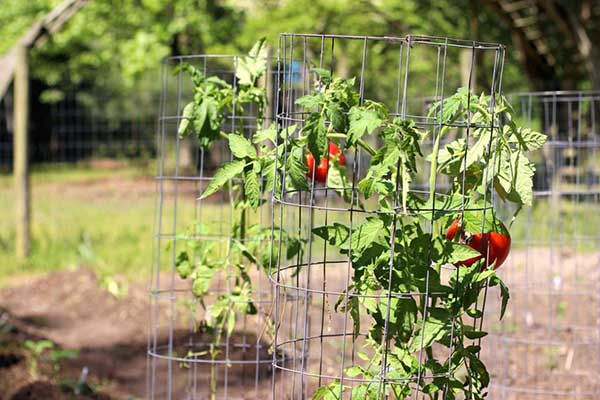
It is convenient to attach both stems and fruit brushes to the frame.The structure is easy to dismantle and move to another place. Its main drawback is the difficult harvesting.
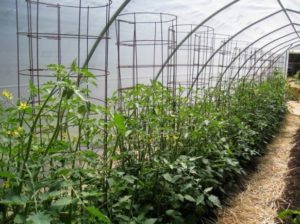
This method of tying is not acceptable when growing tomatoes on a professional level, as it requires significant costs.
Pyramidal caps
This method of tying tomatoes involves creating a support in the form of a wigwam from reinforcement and wire. The pyramid should be set when planting plants. It is necessary to pull the wire between the stakes at a distance of 30-40 cm from each other. One bush is planted at the corners of this structure, which makes it possible to fix four plants at the same time.
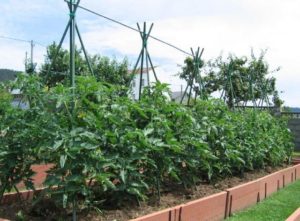
The stem of the plant is wound up behind the wire, first on one side, and then on the other, which allows you to firmly fix the bush and not depend on external negative factors.
The distance between the hoods on the bed should be within 1 meter, which ensures the full flow of light and air.
Video: garter tomatoes
Features of garter tomatoes in the greenhouse and in the open field
There is a misconception that the methods of tying tomatoes differ depending on the method of growing: in a greenhouse or in the open field. But this is not the case!
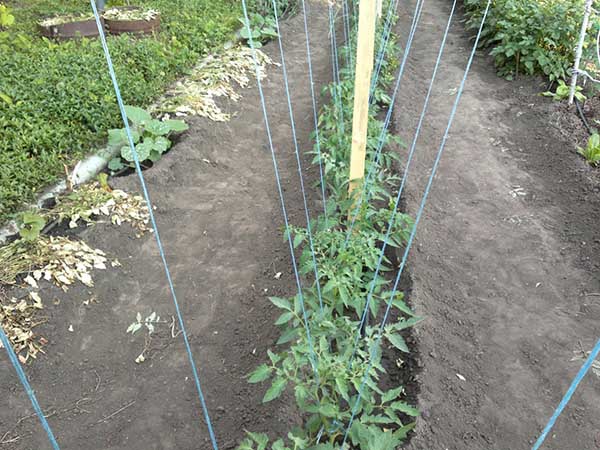
Experts say that the same methods and materials are used when tying tomatoes in a greenhouse and in an open field. Therefore, the gardener can choose his own way of garter, which is most acceptable to him.
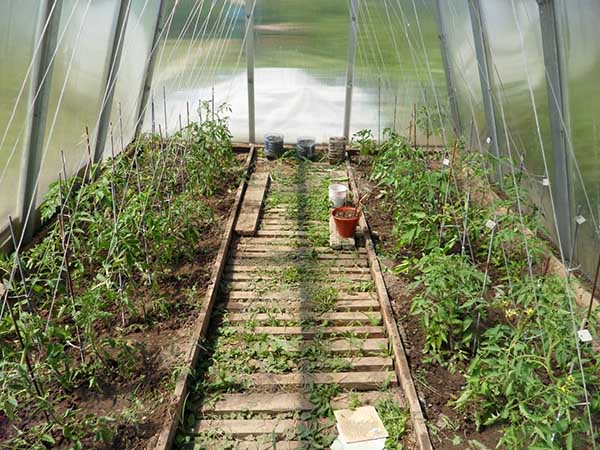
In the process of growing tomatoes, the gardener has to pay a lot of effort and attention to the plants in order to get a good harvest. But, without tying the bushes, these efforts can be wasted, since contact with the ground in most cases is the cause of the development of late blight.
Video: 5 ways to garter tomatoes

